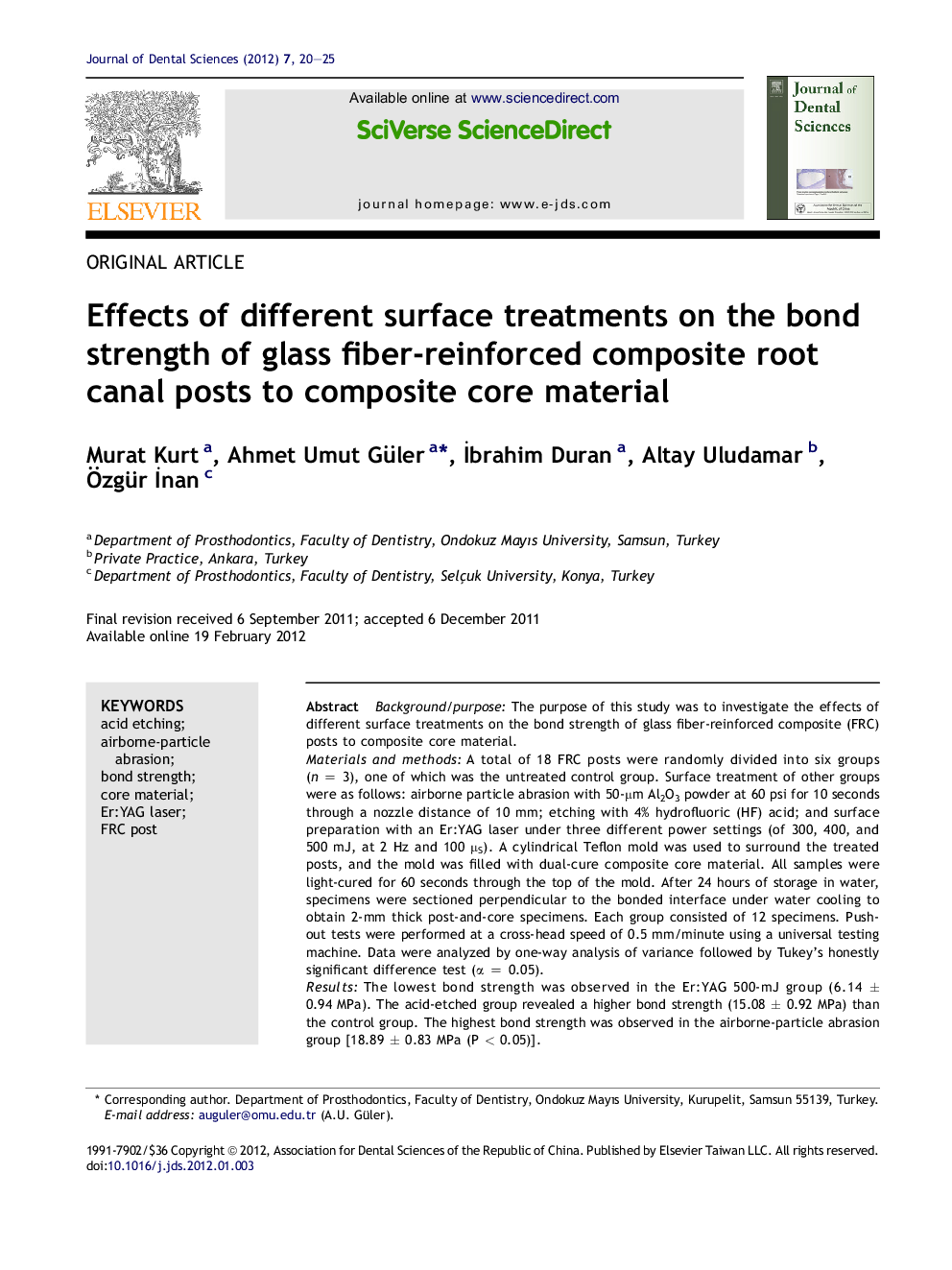| کد مقاله | کد نشریه | سال انتشار | مقاله انگلیسی | نسخه تمام متن |
|---|---|---|---|---|
| 3145703 | 1197097 | 2012 | 6 صفحه PDF | دانلود رایگان |

Background/purposeThe purpose of this study was to investigate the effects of different surface treatments on the bond strength of glass fiber-reinforced composite (FRC) posts to composite core material.Materials and methodsA total of 18 FRC posts were randomly divided into six groups (n = 3), one of which was the untreated control group. Surface treatment of other groups were as follows: airborne particle abrasion with 50-μm Al2O3 powder at 60 psi for 10 seconds through a nozzle distance of 10 mm; etching with 4% hydrofluoric (HF) acid; and surface preparation with an Er:YAG laser under three different power settings (of 300, 400, and 500 mJ, at 2 Hz and 100 μS). A cylindrical Teflon mold was used to surround the treated posts, and the mold was filled with dual-cure composite core material. All samples were light-cured for 60 seconds through the top of the mold. After 24 hours of storage in water, specimens were sectioned perpendicular to the bonded interface under water cooling to obtain 2-mm thick post-and-core specimens. Each group consisted of 12 specimens. Push-out tests were performed at a cross-head speed of 0.5 mm/minute using a universal testing machine. Data were analyzed by one-way analysis of variance followed by Tukey’s honestly significant difference test (α = 0.05).ResultsThe lowest bond strength was observed in the Er:YAG 500-mJ group (6.14 ± 0.94 MPa). The acid-etched group revealed a higher bond strength (15.08 ± 0.92 MPa) than the control group. The highest bond strength was observed in the airborne-particle abrasion group [18.89 ± 0.83 MPa (P < 0.05)].ConclusionEr:YAG laser treatments on the FRC post surface decreased the bond strength. Airborne-particle abrasion and HF acid etching are alternative methods for increasing bond strength of FRC posts to composite core material.
Journal: Journal of Dental Sciences - Volume 7, Issue 1, March 2012, Pages 20–25